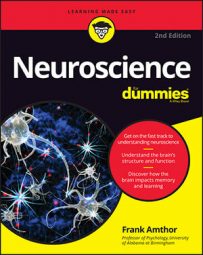This is an exciting time to be a neuroscientist. New tools for understanding the human brain and how it makes people what they are have become available. More tools are needed though, because the brain is the most complex structure in the known universe.
Most neuroscience research has two main goals:
Understanding the brain for its own sake in order to understand ourselves and use that understanding to make life better
Fixing broken brains — that is, diseases of the nervous system such as Alzheimer’s and Parkinson’s diseases, and mental illness such as depression, schizophrenia, and addiction
Understanding the brain is an immense challenge because of its complexity — nearly 100 billion neurons forming on the order of a quadrillion (10,000 billion) synapses. The best computer chips in the world now have on the order of a few billion very simple transistors. Scientists can’t simulate a human brain on any computer that exists now or will for several decades.
Neuroscientists need at least five breakthroughs just to understand normal brains:
They need to be able to record the spiking activity of many more neurons than is now possible (currently a few thousand, at most, in isolated animal neural tissue).
They need to understand the detailed connections of neurons at local and brain scale levels (sometimes referred to as the connectome).
They need to decipher how the complex firing patterns of neural spike trains represent information and how that information is processed by other neurons.
They need to understand how something like 20,000 active genes can specify a functional structure with 100 billion neurons and a quadrillion synapses.
They need to determine the algorithms by which neural synapses change in the process of learning and forming memories.
Fixing broken brains requires another five breakthroughs:
They need to understand the genetic defects that underlie all nervous system dysfunctions that are inherited, from Down syndrome to Parkinson’s disease.
They need to develop better tissue models of dysfunctional nervous systems for testing pharmacological remediation.
They need to discover how environmental triggers can produce dysfunctions such as depression, and how some of these, through epigenetics (the environmentally induced change in genetic expression), are carried across generations.
They need to find out how to make the nervous system repair itself following traumatic injuries.
They need to understand how to efficiently couple human brains to computers for prosthetics and future functional enhancement.

